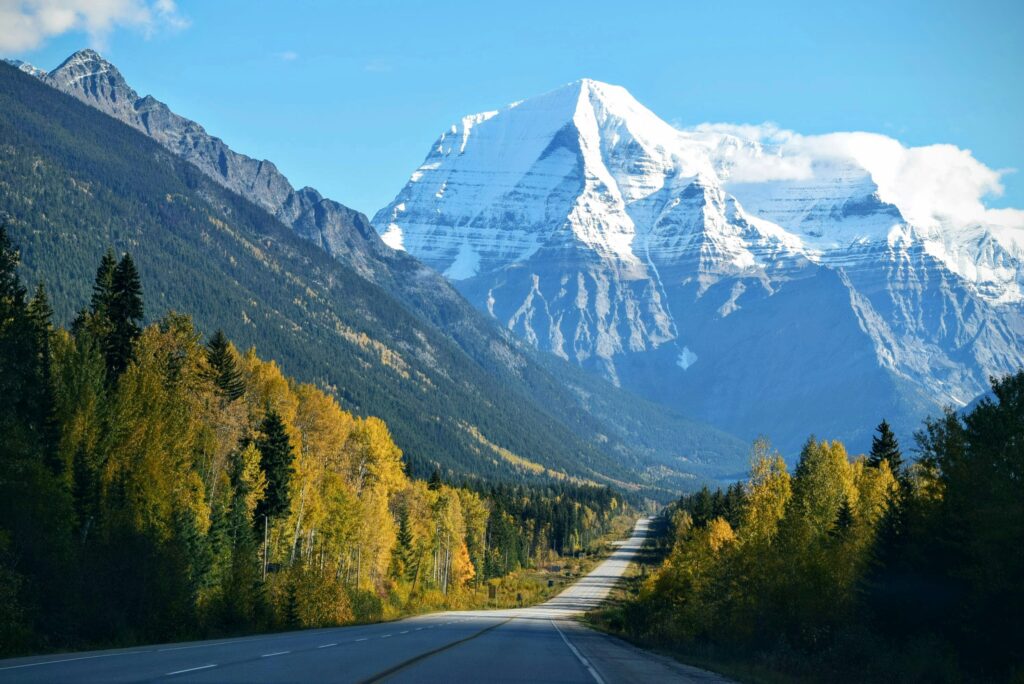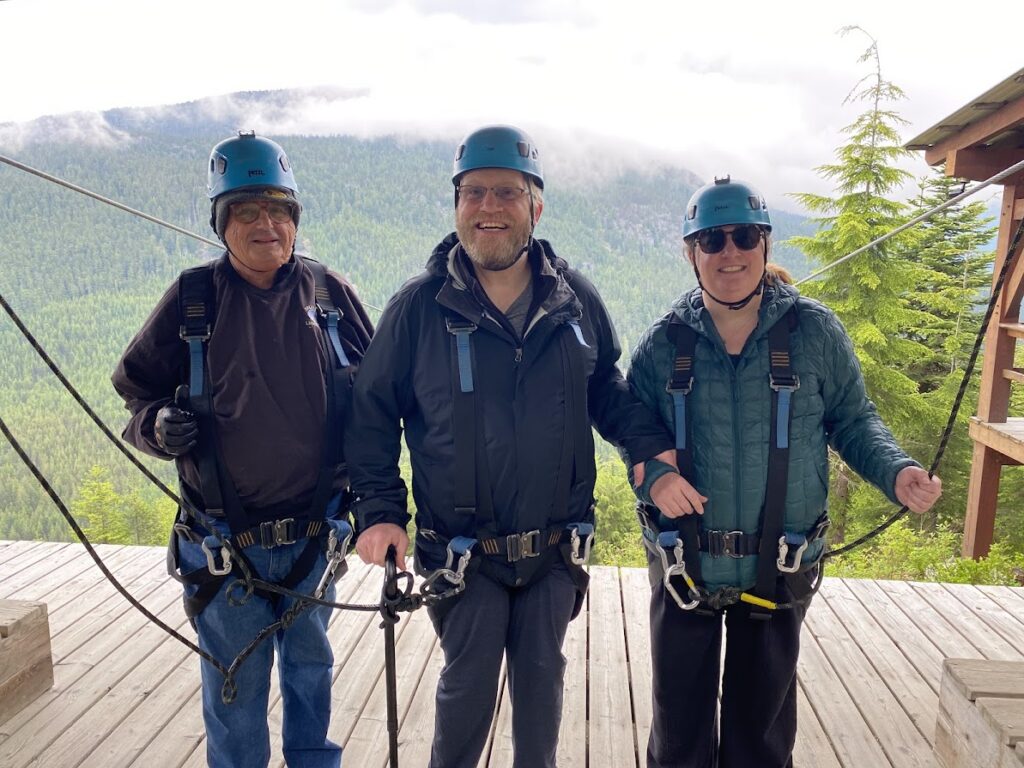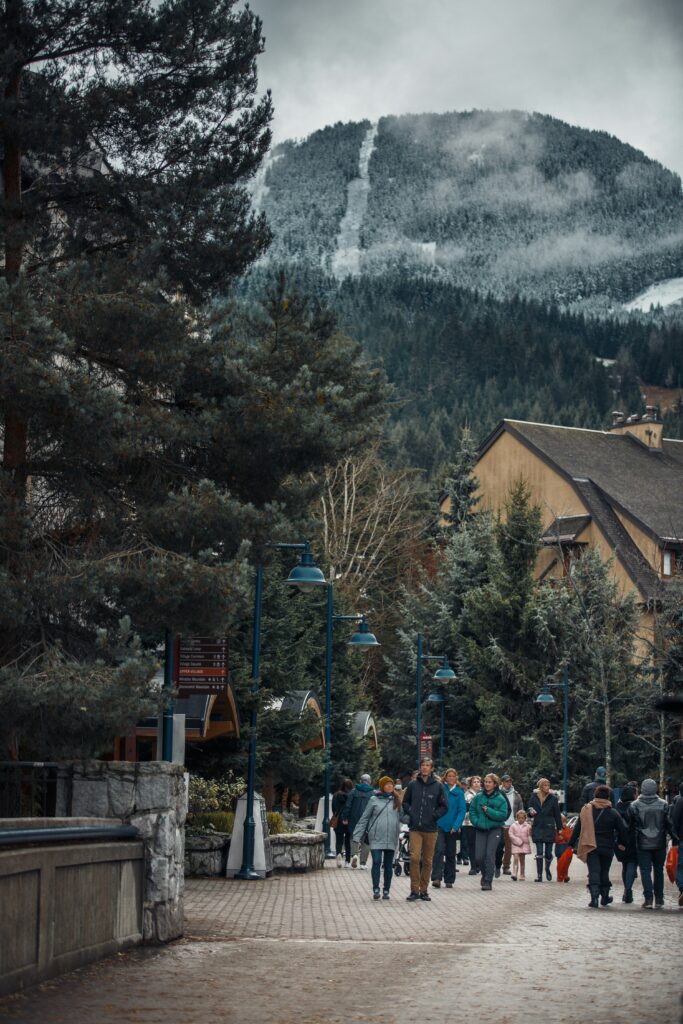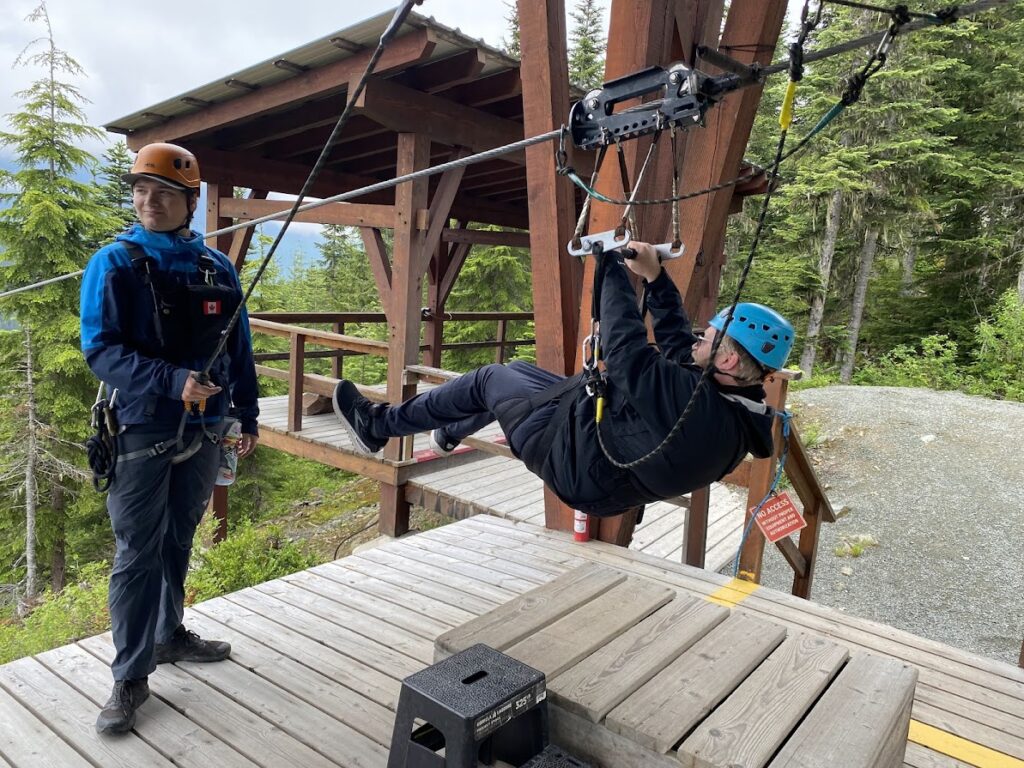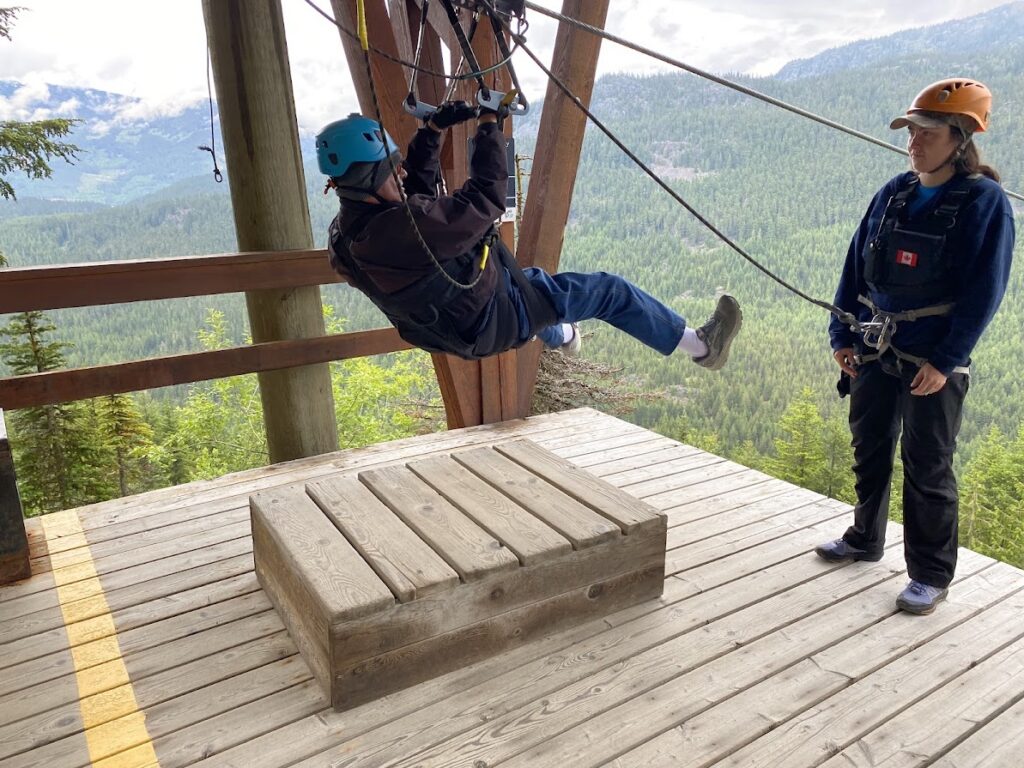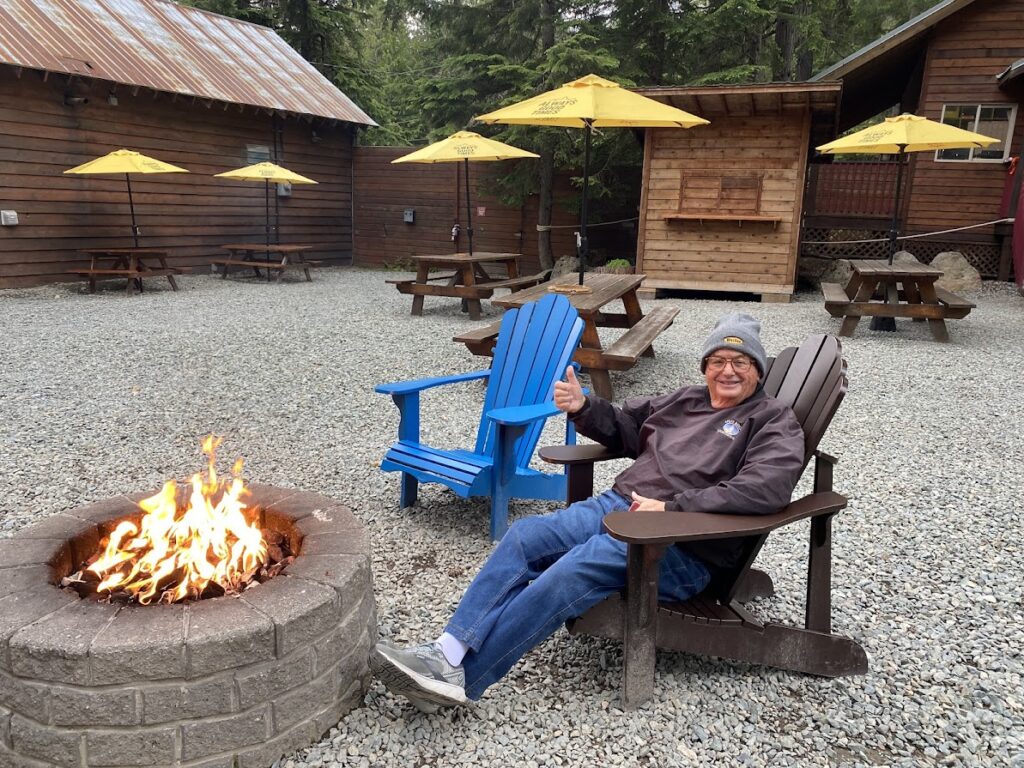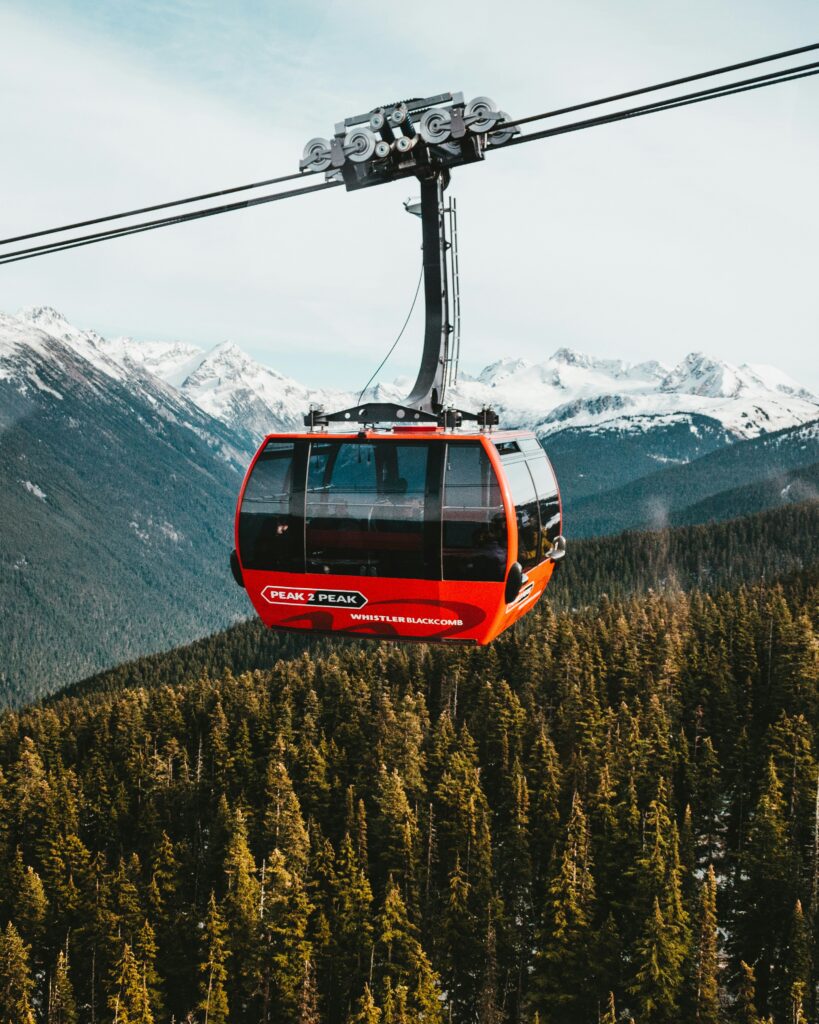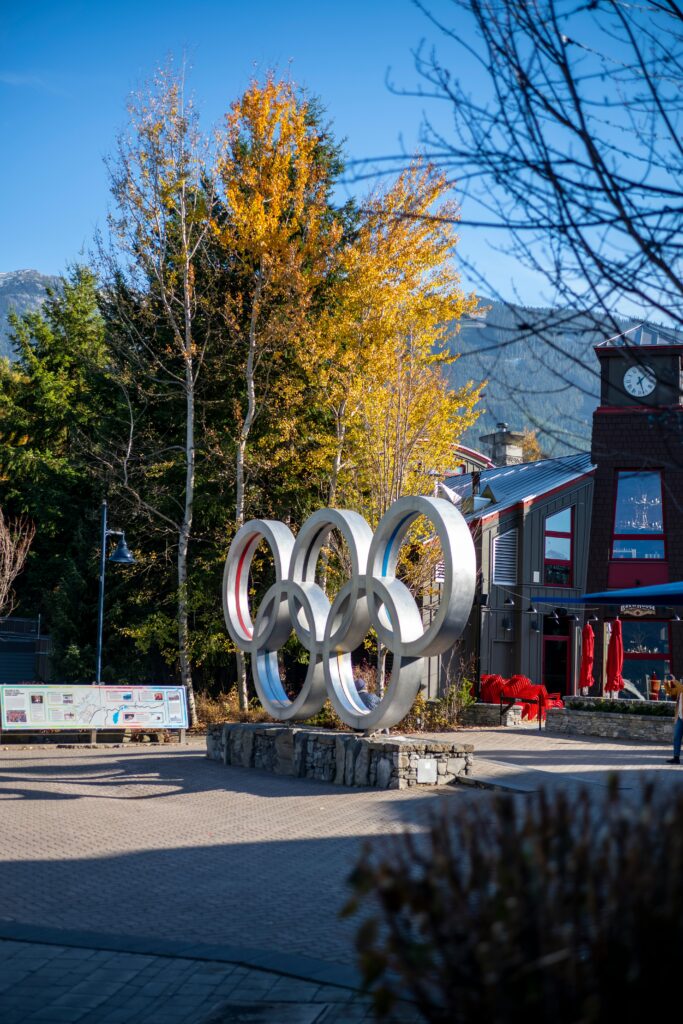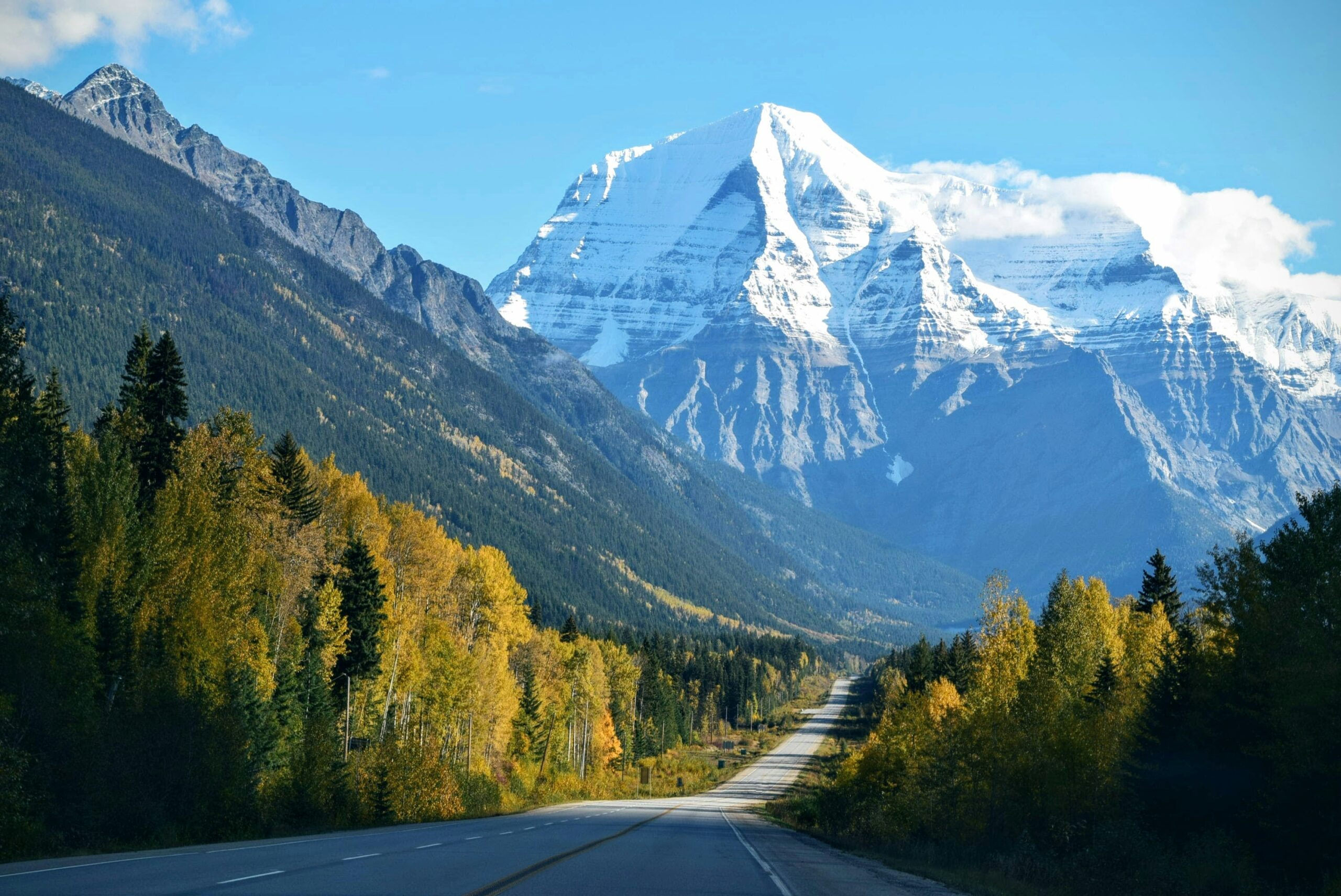
Driving from Whistler to Jasper
The next part of our Grand Western Canadian roadtrip was the drive from Whistler to Jasper. Unfortunately, here is where we left our GuideAlong tour guide behind for a while. If you are following the GuideAlong version of this trip, you will drive to Banff from Whistler instead of Jasper; however, we decided to head to Jasper next.
Duffey Lake Viewpoint
The first suggested stop on this road trip is the Duffey Lake viewpoint, which is about an hour and fifteen minutes outside of Whistler Village center. There is accessible parking at Duffey Lake; however, we didn’t stop. I missed the turnoff for this one.
Canadian Wine – Fort Berens Estate Winery
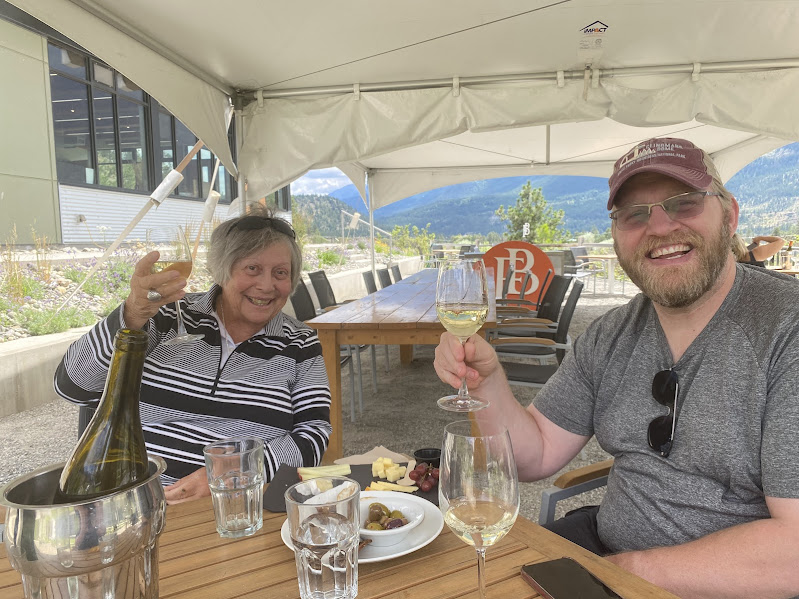
Our next stop was at Fort Berens Estate Winery in Lillooet, BC, where they grow wine in Frazier Canyon and overlooking the Frazier River. It is right on the driving route and won’t add any time to the drive. You enter Lillooet as you come down out of the mountains into the plains, about a two-hour drive from Whistler Village Center. Fort Berens was the perfect stop to break up the drive, and I highly recommend it.
Peggy is a chardonnay drinker, and there were no chardonnays available by the glass, So, we bought a bottle, got a charcuterie board, and sat outside and enjoyed the views. The weather was quite a bit warmer in Lillooet, so we all shed some layers while we sat outside under their tent. The views from Fort Berens’ outdoor space are incredible.
There were a few stairs to get down to the tent area, and I’m not sure if there was a ramp.

Marble Canyon Provincial Park
Another scenic spot to stop between Whistler and Kamloops is Marble Canyon Provincial Park. We made only a brief stop at this part to grab a couple pictures. Accessibility information on Marble Canyon is available, however, this park isn’t really accessible. There are accessible parking stalls, but no paved pathways down to the lake. Both Peggy and Dave chose to stay at the car, while I hopped out to take a few pictures. If you don’t stop at Fort Berens, this might be a good place for a picnic lunch.
Marble Canyon is in the Pavilion Mountain Range in a limestone canyon. According to the website, the canyon walls “have the appearance of a crumbling castle wall,” and the canyon was once part of a Pacific island chain.
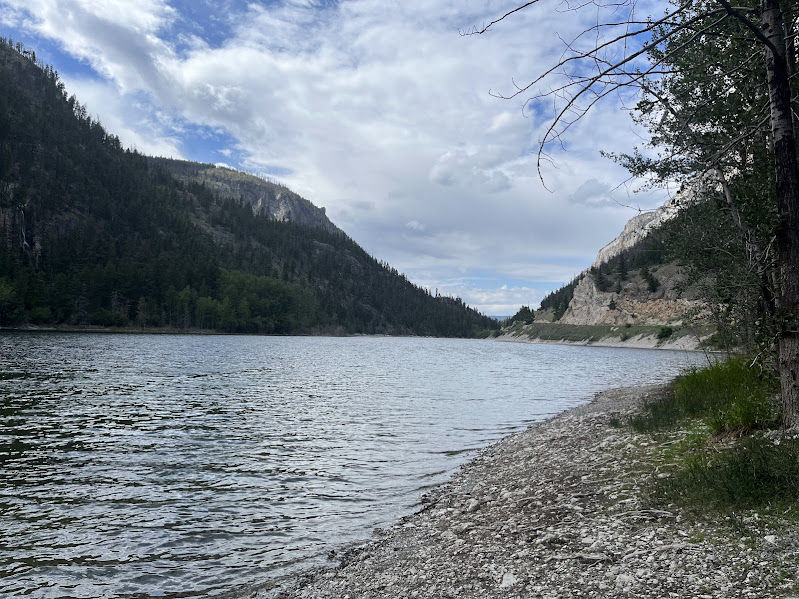
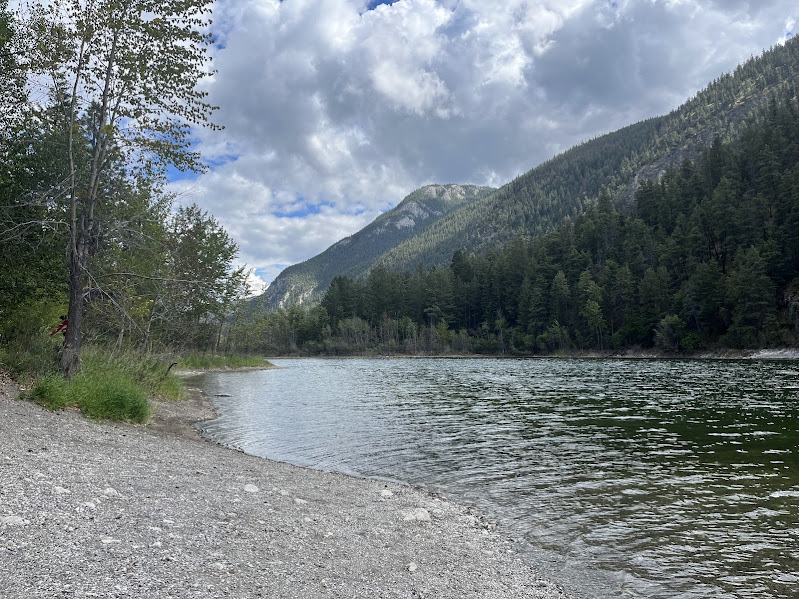
Stop for the Night – Kamloops
Kamloops is a university town, home to Thompson Rivers University, located at the confluence of the North and South Thompson Rivers. There are lot of hotel options here, all reasonably priced, so I’m sure you can find someplace to sleep.
Kamloops has an accessibility and inclusion plan and aims to be one of the most progressive cities in Canada for people with disabilities, “a place where disabilities are not barriers to living full lives and contributing to the community.”
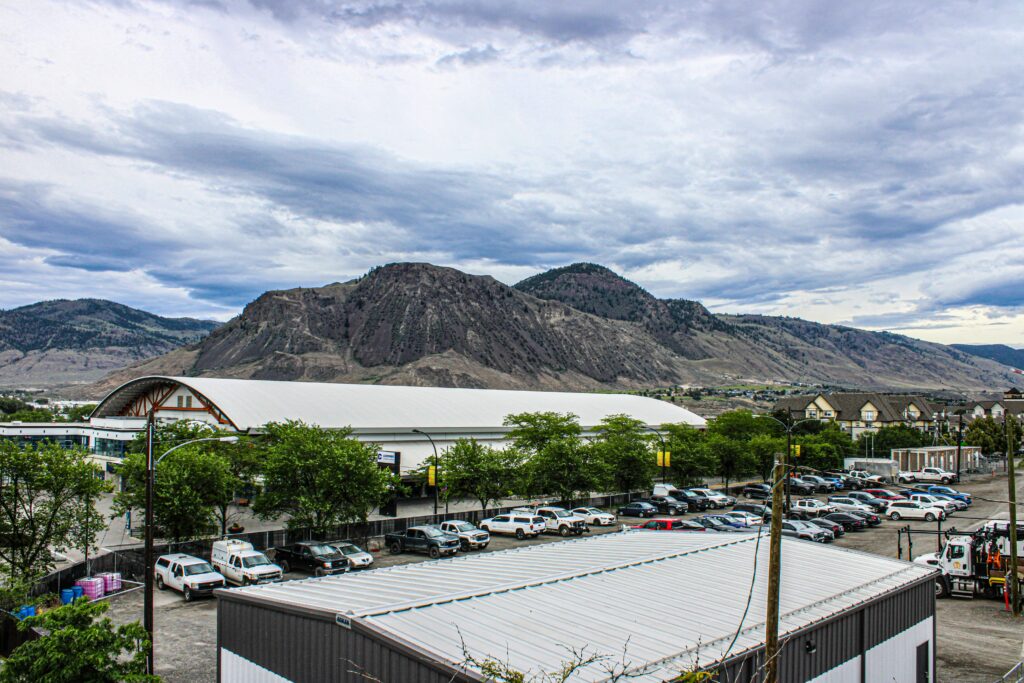
Kamloops Riverside Park
Riverside Park in Kamloops offers free live music every evening in July and August. We were tired from our day of driving so skipped out on the music, but it really seems like a cool option if you have the energy. Certain parts of Riverside Park are accessible, including an accessible water park and inclusive playground open to the public as well as a beach-access mobility mat, two accessible water fountains, and multiple accessible pathways.
Kamloops BC Wildlife Park
Kamloops is also home to BC Wildlife Park, a wildlife part and rehabilitation center for orphaned and injured wildlife, including a number of grizzly bears, black bears, and even a kermode bear. There are also a couple cougars, wolves, foxes, as well as goats, sheep, a llama, donkeys, and lots of birds of prey.

BC Wildlife Park is also accessible. Despite the wildlife, it allows the admittance of certified guide and service dogs. There is free accessible parking. The park can be explored by miniature train, which also has a wheelchair accessible space and paved ramp. All of the pathways within the park are paved, but there may be a slight incline in some areas, and the animal habitats are wheelchair accessible. They also offer sensory kits at guest services for guest with autism. These kits include a storyboard, noise cancelling headphones, as well as other tools. You may also borrow a wheelchair or power mobility scooter at the guest services desk on a first come, first serve basis. The restrooms contain accessible stalls, and the outdoor restrooms have push-button automatic doors and roll under sinks.
While we originally planned to spend a morning at the Wildlife Park, we decided to skip this and hit the road to Jasper earlier. I think we really missed out.
North Thompson River
Another option we considered was a scenic raft tour down the North Thompson River starting from Clearwater (about 1 hour 15 minutes from Kamloops on the way to Jasper). The tour runs from May through October and offers a 2-3 hour scenic float down the North Thompson River.
However, because Peggy and Dave weren’t certain that they had the mobility to handle getting on and off the raft, ultimately decided to pass on this stop.
For those who can’t walk long distances, but feel comfortable stepping onto a raft, this might be a great option. It involves a short walk of about 200 meters to the riverbank and then a float on an 18-ft. inflatable raft with rear mounted oars. The most commonly spotted wildlife are ospreys and bald eagles. The scenery along the North Thompson River is spectacular.
For the more adventurous, they also offer a 3 hour Whitewater rafting tour in Wells Gray Provincial Park. If you take this tour, prepare to get cold and wet! You will be outfitted with wetsuits, and the route involves a number of different rapids. You will also have the opportunity to go cliff jumping if that’s your thing. This was definitely, not our speed.
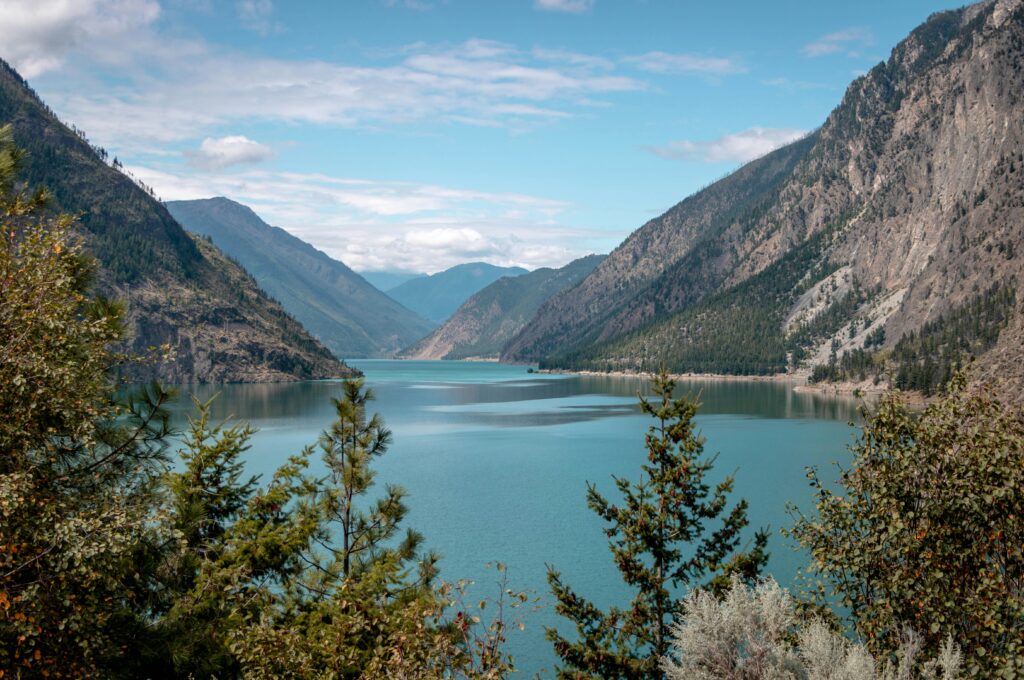
Wells Gray Provincial Park
On that note, I’d like to take a few minutes to talk about Wells Gray Provincial Park. Wells Gray Provincial Park is a 42 mile detour on the drive at Clearwater Valley Road. If you take this detour, you will have the opportunity to see dozens of waterfalls, including Spahats Creek Falls, Helmcken Falls (the fourth highest waterfall in Canada), and many more. Wells Gray Provincial Park offers a range of hiking, canoeing, kayaking, and even motor boating opportunities. If you have more time than we did, you could easily spend several days exploring the park.
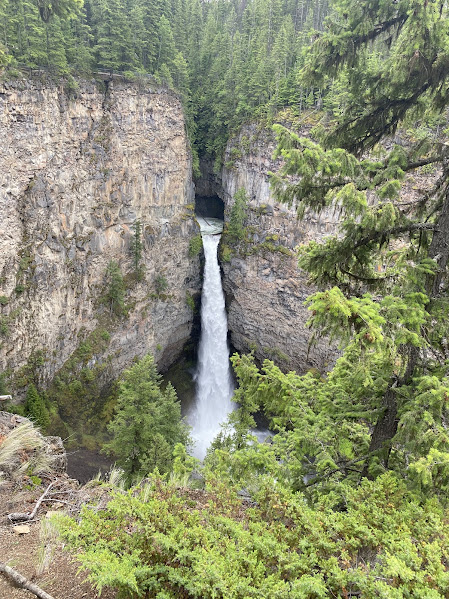
We stopped briefly at Spahat’s Creek Falls which was relatively accessible for Dave, but too far a walk for Peggy; however, we didn’t continue on within Wells Gray Provincial Park as Helmcken Falls’ viewing platform was closed when we visited, and we had limited time on our drive and were trying to beat the rain to Jasper. There was plenty of parking, and the restrooms were accessible. The path from the parking area was slightly steep only when entering the path from the parking lot, but otherwise, Dave didn’t have problems in his wheelchair.

Rearguard Falls Provincial Park
Another stop on this drive is Rearguard Falls Provincial Park. We skipped this stop as it was really raining at this point in our drive. Rearguard Falls is basically the end of the journey for Chinook Salmon, the largest of the Pacific Salmon. The accessibility information for Rearguard Falls indicates that there is accessible parking and while the path is generally wide and relatively flat, getting to the viewing platform my require many flights of stairs. The viewing platform is not connected to an accessible pathway so viewers would need to be able to climb stairs with the assistance of a handrail.
Mount Robson Provincial Park
The final, and most impressive, stop prior to arriving in Jasper is Mount Robson Provincial Park, which is guarded on the west by Mount Robson, the highest peak in the Canadian Rockies. Mount Robson is visible from Highway 20 as you drive in from Clearwater; however, it is usually obscured by clouds, with clear views occurring on average only 12 days per year.
Unfortunately for us, due to the rain, the day we drove through was not one of those clear days. In fact, we didn’t realize we were driving past Mount Robson until we were literally driving past the parking lot. If you get a clear day, this is a can’t miss stop. Probably my biggest regret from this trip is that we didn’t drive back out to Mount Robson on one of the clear, beautiful days that we had in Jasper after our drive in.
